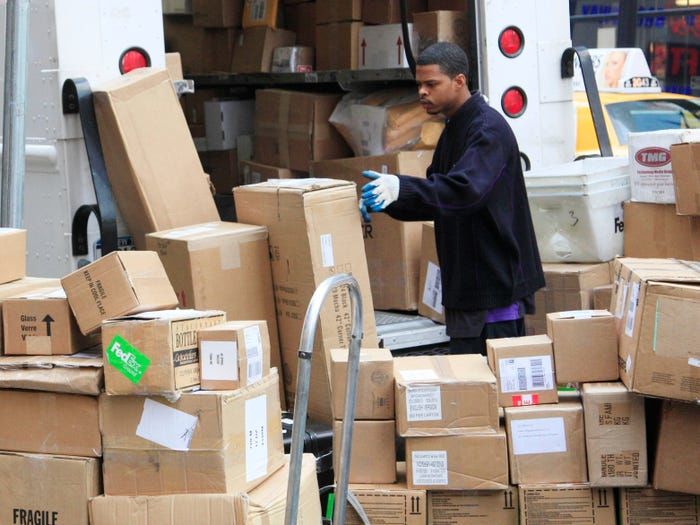
A 'returns tsunami' is about to deal a crippling blow to retailers
A tidal wave of returns is about to hit retailers already dealing with excess inventory.
Inventory glut was the theme of 2022 for retailers ranging from Nike to Nordstrom to American Eagle. Quarter after quarter, retailers — particularly in the apparel space — reassured Wall Street that they were working through the mountains of extra product they'd accumulated in 2022, the result of cooling consumer demand combined with a hangover from tangled supply chains.
And while heavy holiday discounting may have helped, industry experts say retailers are months away from fully easing their inventory issues — and that it's time to brace for a record number of returns.
A 'returns tsunami' could hit retailers in the next two weeks

The average consumer starts sending back holiday purchases in the first few weeks of January, which means retailers will start receiving them in another 10 to 14 days, according to Romaine Seguin, a former UPS executive and the CEO of Good360, a nonprofit that partners with retailers to donate returned items that can't be resold.
"It's the calm before the storm, because right now the storm's with the UPS stores and whoever's taking all the returns," she said.
A December report from Insider Intelligence predicted that US shoppers would send back more than $279 billion worth of merchandise by the end of 2022, equivalent to 26.5% of consumer purchasing for the year.
For this holiday season specifically, Rob Garf, vice president and general manager of retail at Salesforce, predicted a "returns tsunami" with more than 1.4 billion, or 13%, of orders getting returned, up 57% from last year. Returns-technology platform Loops Returns found that merchants who use its platform processed 133,000 returns on December 26 and December 27 alone, 33% higher than in 2021.
"'More returns than ever' is the headline," said David Sobie, vice president of Happy Returns, which helps process and consolidate returns for retailers.
Why so many? Sobie chalked it up to the "one-in-a-generation shift" from shopping in person to shopping online, which has led to people "bracketing" their purchases, meaning they buy more than one color or size of an item at a time and return what they don't want. A November Happy Returns consumer survey found that a third of shoppers planned to bracket heading into the holidays.
Retailers have been dealing with high inventory since spring 2022

But even before this "tsunami" of returns hits, retailers were already dealing with too much inventory.
Products flew off the shelves in 2021 as shoppers, flush with stimulus money and craving a return to normalcy, drove over $6.5 billion in retail sales. Consumers were buying so much stuff that retailers placed bigger-than-usual orders for the following year. Combine those goods with all the product retailers ordered in 2021 that got stuck on a boat somewhere and arrived late, and by spring 2022, retailers were overrun with inventory — just in time for inflation to slow down consumer spending.
By September, retailers were "drowning in inventory," D.A. Davidson retail analyst Michael Baker wrote in a note at the time, with total retail inventories up 22% year-over-year.
So when the holidays rolled around, bargains abounded. Discounts on toys topped 34%, compared to 19% in 2019, while discounts on electronics reached 20% versus 8% pre-pandemic, drawing in shoppers and "helping retailers who were challenged with oversupply issues," Vivek Pandya, lead analyst at Adobe Digital Insights, said in a statement.
But according to Baker, even with all those discounts, retailers' inventory troubles aren't over quite yet.
"I think they've made progress, I think we're getting there," Baker told Insider. "But I think, on average, retailers won't be fully through the excess inventory at the end of the fourth quarter. My assumption is by the back half of 2023, we're not gonna be talking about inventory overhang anymore."










